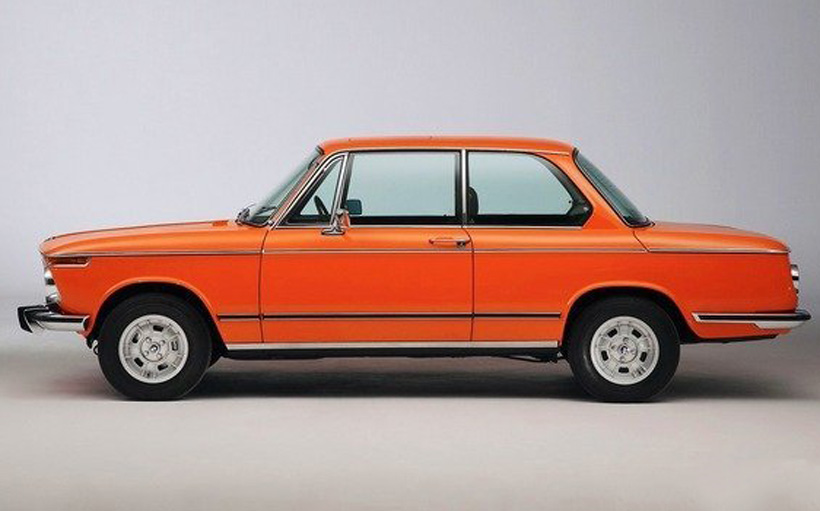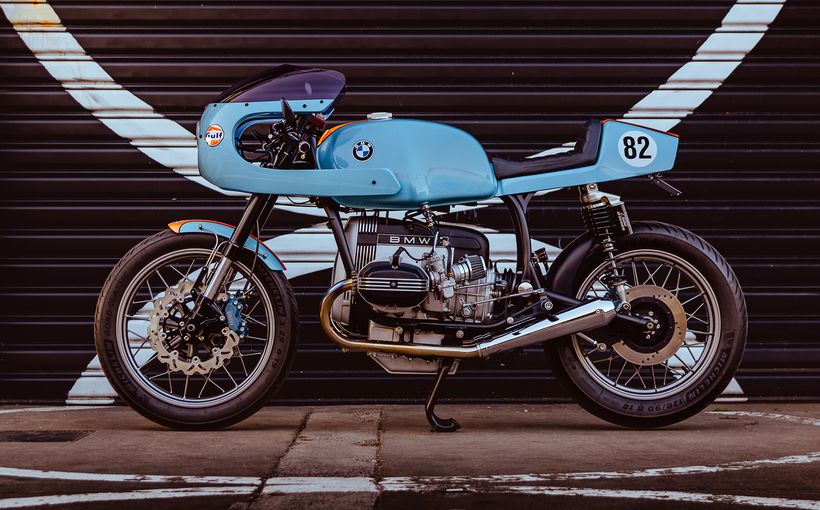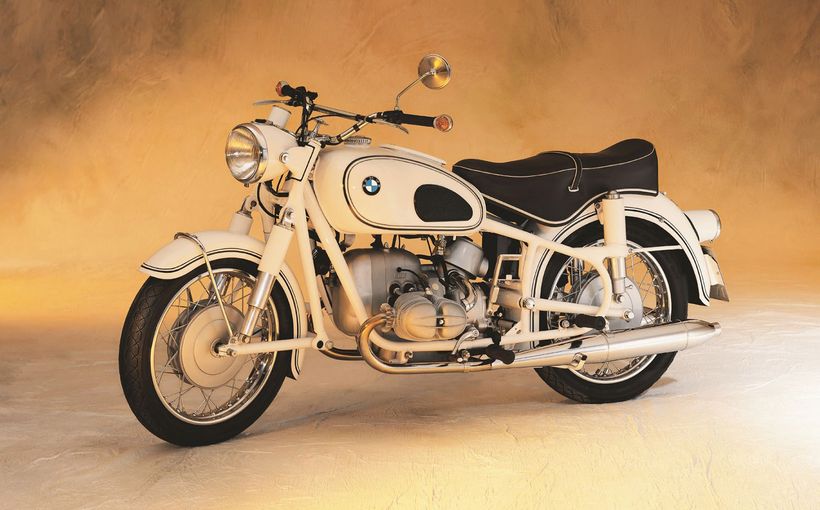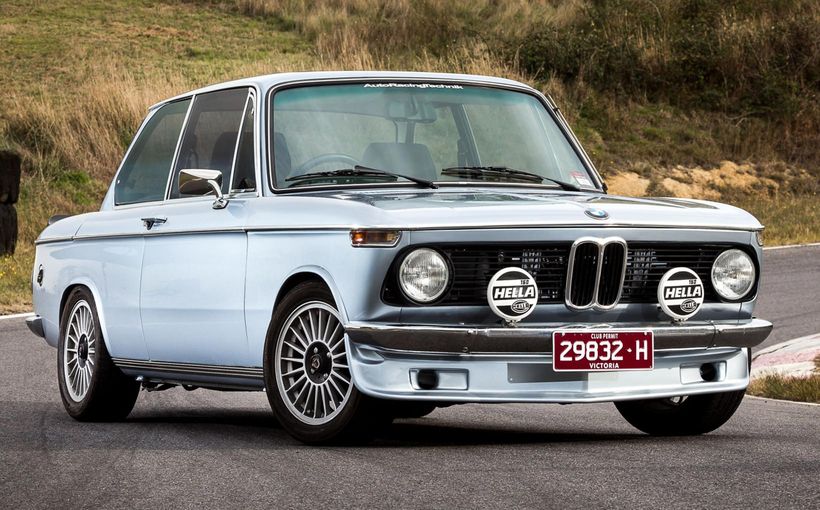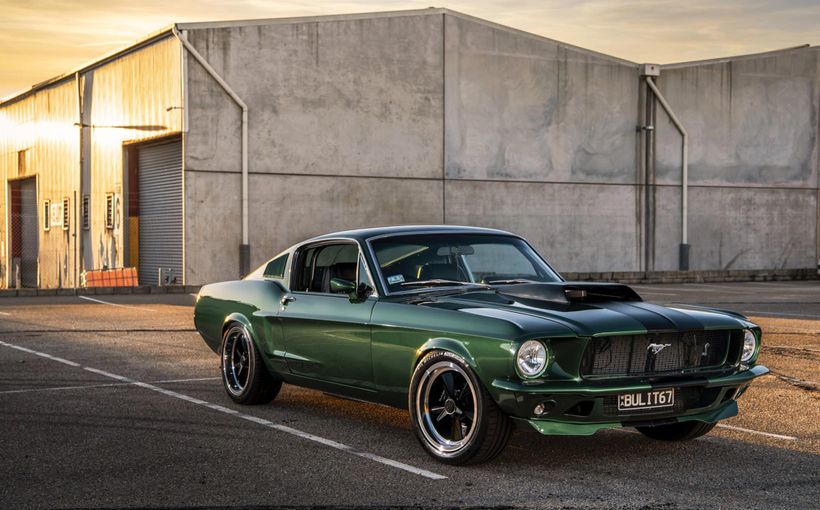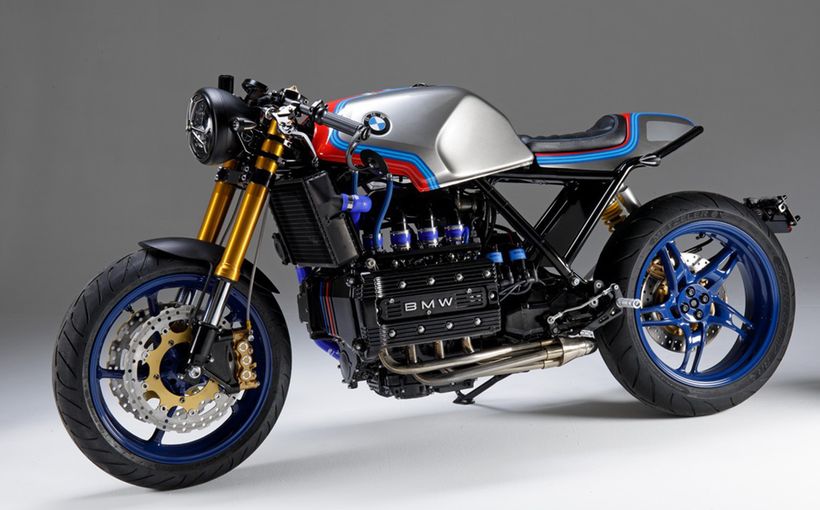BMW 2002: The Ultimate Driving Machine

Orange was a totally cool colour in 1968. Optional factory alloys are understated, like the car itself. The 2002 was one of the great Q-cars!
The BMW 2002 was one of the cars that did the most to give the Bavarian marque the cherished image it holds today. In 1968 it revolutionised the concept of the two-door sports sedan. Certainly there were precedents for a high performance car of its type but somehow this new BMW had a more international appeal than the Italian triple treat of Alfa-Romeo Giulia, Fiat 1500 and Lancia Fulvia. The Q-Car wolf-in-sheep’s-clothing image appealed to many customers, especially in the US, where many a Mustang or Camaro driver must have wondered what the hell that was that just left them for dead!
Of course the 2002 didn’t just appear out of nowhere as a fully fledged new model. Its ancestor, BMW’s ‘Neue Klasse’ (‘New Class’) 1500, was the car that saved the company and it’s impossible to understand the character and appeal of the 2002 without understanding what was so special about the 1500.

At the end of the 1950s BMW was set to go to the wall. One man’s vision saved BMW. When shareholders revolted on 9 December 1959, appointing newcomer Herbert Quandt as chairman, the banks reversed their previous decision not to lend money to save BMW from bankruptcy. Had the Quandt family not produced its chequebook, the overwhelming odds were that the company would be absorbed into Daimler-Benz. Quandt himself still had a stake in Daimler-Benz and feared a hostile takeover.
BMW’s parlous state from 1945 to 1959 was largely due to an ill-sorted model mix. The product planning was chaotic. Emerging in poor shape from World War Two, the company relied on the 501, a model nicknamed the Baroque Angel, and aimed at the new Mercedes-Benz 300s. The 501 with its 65 horsepower 2.0-litre four was as underpowered as its manufacturer was under-financed. For 1954 it got a 100 brake horsepower 2.6-litre V8 to become the 502 but no more than 4500 cars were built per year and by the mid-1960s sales had slowed to a trickle with a total volume over that extended period of just 23,120. The elegant 503 convertible and gorgeous 507 roadster gave BMW an upmarket image but they were expensive to make and only sold in tiny volumes. BMW was dependent on its three-wheeler Isetta bubble car to keep it going.

To put those production numbers into context for our story, a total of 385,257 2002s were made in less than eight years. At its peak the 2002 accounted for almost 60,000 cars per year.
Herbert Quandt had determined in 1959 that BMW’s survival depended on a whole new class of car and, indeed, that’s what the 1962 BMW 1500 was called, the ‘New Class’ (‘Neue Klasse’). This car was the direct ancestor of the 2002 and the process was simple. It was the unquestioned star of the 1961 Frankfurt Motor Show.

Racing driver Alex von Falkenhausen, who was also BMW’s chief engine designer, created an 80 horsepower single overhead camshaft 1.5-litre four with enormous potential for development. This was just on the cusp of the surge in popularity of touring car racing.
It wasn’t just the engine that made the BMW 1500 so desirable. The power to weight ratio was outstanding because this compact sedan tipped the scales at 900kg. In an era when many sedans still had cart springs at the rear and drum brakes on all four wheels, the new BMW boasted front discs and independent rear suspension. Perhaps its closest German rival in specification was the Borgward Isabella. Even though this smart two-door sedan had made its debut in 1954, continual improvements kept it highly competitive.

Nevertheless Borgward was in trouble. Export markets were critical and in 1960 just 2500 Isabellas were sold in the US compared with 8500 in 1959. Chalk up one victory for Detroit’s own ‘Compact’s introduced for model year 1960. And in Australia the 1961 ‘Credit Squeeze’ cut heavily into Borgward sales when would-be customers could not get finance.
Here’s the relevance of Borgward to BMW. When Dr Carl Borgward’s company was dissolved on 28 July 1961, BMW hired every employee it could from the failed rival. When the BMW 1500 was shown at Frankfurt some pundits remarked that ‘BMW’ stood for ‘Borgward macht weiter’ (Borgward lives on).

The 1500 set the template for the ‘Ultimate Driving Machine’.
Even now, some automotive historians will argue the case that BMW’s huge success was in part predicated on the collapse of Borgward. Doubtless, many loyal customers who could no longer buy Borgwards bought BMW 1500s instead.
But BMW would have survived even without the failure of Borgward. The four-door 1500 was a more modern, practical car than the two-door Isabella and delivered similar performance to the up-spec Isabella TS. Its lively SOHC 1.5-litre four-cylinder engine delivered 80 brake horsepower and BMW claimed a kerb weight of just 900 kilograms. It even had independent rear suspension. It out-performed such highly regarded rivals as the Volvo 122 Amazon and Peugeot 404. And the EK Holden or EJ Premier? You must be kidding!
The BMW 1500 attracted great attention but I have seen no evidence of a response from William Lyons. Here, though it’s doubtful that Lyons would have guessed as much, was a new rival for Jaguar. In fact BMW’s new range of cars beginning with the 1500 ended Jaguar’s dominance in the sporting mid-size sedan market.

To understand the character of this new type of BMW it’s instructive to consider the Borgward Isabella but it is also important to see how BMW developed and refined the idea of a distinctively German sports sedan. For a start, the 1500 was about 200kg lighter despite being similar in size. Secondly, it offered a sporty floorshift instead of the column shift which had been fashionable in the early postwar years. The BMW formula favoured sporty driving characteristics above the need to accommodate a possible third adult in the front. The 1500 was leaner, cleaner, more modern. Its single overhead camshaft was a thing of joy, designed with plenty of room for development to put BMW at the forefront of touring car racing.
Due to the success of the 1500, BMW paid a dividend in 1963 for the first time since World War II.
From the 1500 to the 2002 took almost seven years. The first step was the two-door BMW 1600 sedan in March 1966. Remember that the two-door sedan, exemplified by the Borgward Isabella, was a popular style in Europe. The 1600 gave BMW the opportunity to equip the four-door Neue Klasse with a larger engine to create a two-tier product range right where the demand was. In 1968 the lovely large sedan, badged simply ‘2500’ or ‘2800’ expanded the lineup to three.

In 1967 BMW introduced the 1600 Ti variant with dual carburettors, higher compression ratio and revised camshaft timing. It also got firmer suspension. But there was a problem meeting stringent US emissions legislation. The easy solution was to fit the 2.0-litre engine which was used in the (by then) current edition of the Neue Klasse sedan. Even with just a single carburettor, this unit gave the two-door the same maximum power output of 118 brake horsepower and a mother lode of torque (up from 97 pounds-foot at a highish 4500rpm to 116 right in the meat of the rev range @ 3000).
Meet the BMW 2002, a car that came into being to suit the North American market but quickly at home on the roads of the world and especially Germany’s autobahns.

With the 2002 economies of scale really kicked in for the Bayerische Motoren Werke. All its major components were already used in other BMWs. In Germany it sold for 9,250 Dm compared with about 8,250 for the Opel Rekord 1900S which – at 16 seconds – took 5.7 seconds longer than the 2002 to reach 100km/h. On unrestricted sections of the autobahns in the late 1960s about the only cars liable to grow larger in the rear-vision mirror of a hard-driven 2002 were a Porsche 911S or a Ferrari Dino 246.
As for the name, the two-door car was called ‘2002’ to distinguish it from the 2000 sedan, the ‘02’ referring only to the number of doors.
This really was the definitive Q-car. The 2002 badge appeared only on the rear of the car and in understated chrome numerals. There was no boastful stripery, no huge exhaust outlet.
The 2002 was released in the critical US market just a month after its German debut, and was quickly dubbed the ‘whispering bomb’. Exports to North America comprised almost 20 per cent of total production. The introduction of a three-speed ZF automatic transmission in June 1969 also helped sales.
In September 1968 BMW introduced a twin-carby Ti variant of the 2002 but this car was not sold in the US or Australia, thanks to the impossibility of meeting the US emissions law. The Ti could sprint to 100km/h in 9.1 seconds on its way to a maximum of 185km/h. The track was 12mm wider and the amazingly skinny 4.5-inch rims were replaced by still remarkably narrow 5s. The front disc brakes were enlarged by 37 per cent.
This time around the answer to a less polluting high-po variant of the 2002 lay in fuel-injection. By this stage BMW’s model codes were getting complex. The injected car, introduced in 1971, was known as the ‘Tii’, with the second ‘I’ denoting fuel-injection. BMW had been using Kugelfischer mechanical injection in motor racing for some years. Because the 2002 Tii used taller gearing, it didn’t deliver quite the acceleration of the Ti but had an even higher top speed (190km/h), a very important selling feature in Germany.

In September 1973 announced the world’s first series production turbocharged car, the astonishing 2002 Turbo. At 18,720 Dm on its home market, this 170 bhp variant on the classic theme was half the price of a Porsche 911 Carrera. The zero to 100km/h time was just seven seconds and top speed was 211km/h. That was an almost bewilderingly high figure for the time. I clearly recall a trip to Germany in 1986 hosted by Volvo Australia where the idea was to showcase the new 760 Turbo wagon’s ability to reach 200, a speed just out of reach of six-cylinder S-Class Mercedes. Imagine, 13 years earlier than this, hitting 211 in the left lane of an autobahn.
Unlike its less dramatic – though always highly impressive – predecessors, the Turbo did not hide its dazzling light under a bushel. With its spoilers and flares it bore more than a passing resemblance to the awesome 3.0CSL racers then creating such a spectacle in the German Touring Car Championship. How disappointing that this ultimate 2002 was never sold in Australia. Imagine a couple of these ripping around Mount Panorama on the first Sunday in October 1973 or ’74!
With the Turbo, the 2002 was no longer a Q-Car. Emblazoned across its deep front spoiler in cursive was ‘2002 turbo’ in mirror-image lettering. Drivers about to be overtaken could make no mistake about the identity of the fast car in their rear-view mirrors. But this backfired on BMW. At the time the German road toll was rising dramatically and within four months the lettering was gone from all production BMW 2002 Turbos.

In summary, the 2002 even in its original guise was a formidable compact sports sedan that delivered much more than its understated styling and décor implied. I owned a Garnet Red 1975 facelifted (rectangular taillights) 2002 in 1982. It kept company with a 1973 Renault 16TS. No question, the 2002 was quicker but I preferred the sharp rack and pinion steering of the Renault, its voluptuous ride and irresistible practicality. But, then again, the 16TS had been a favourite of mine for many years.
Perhaps the fact that I had high HP repayments on the BMW influenced my thinking at the time. I’d love to own one now and I still remember the deep resonance of its exhaust note, the slick gearchange and the way it just hunkered down on the rear and sprinted from a standing start. Just the once I saw an optimistic 180 and the 2002 was hardly arrow-straight at such speed, but what an ultimate driving machine it was, alive in my hands!

So many years and cars later, given the choice between even the world’s best Renault 16TS and a tidy 2002 now, I would unhesitatingly plump for the car with the blue and white roundel on its nose.
The 2002 spiced up the recipe BMW created with the Neue Klasse 1500 sedan. No car comes out of nowhere and the Borgward influence on BMW’s renaissance is undeniable. The BMW 1500 Neue Klasse set the direction for a whole new interpretation of driving dynamism with a Bavarian flavour. By the end of the 1960s it was the Bayerische Motorischen Werke that had occupied the territory once ruled by the Jaguar Mark 2 and S-Type. The 2002 was the critical car in that invasion.

